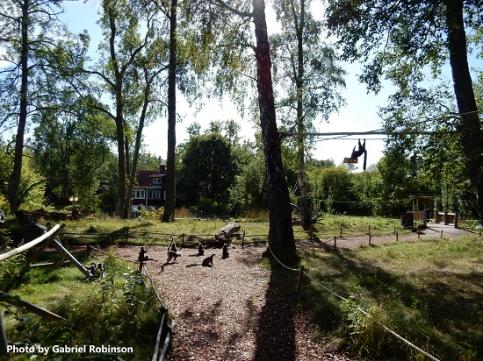Introduction and Aims

By studying how captive animals use outdoor space, we can determine which areas fulfill their biological and behavioral needs to improve enclosure design for animal welfare and visitor experience.
Previous studies have analyzed how different species living in zoo settings use space, and they have concluded that some parameters such as environmental enrichment, visitor effect and meteorological conditions could affect them.
However, very few studies have been carried out in captive lemurs and, to the best of my knowledge, no previous study has focused on both the horizontal and vertical use of outdoor space in a mixed exhibit of captive lemurs, analyzed together with the combined effect of enrichment, visitor presence and meteorological conditions.
Therefore, this study aimed to answer the following questions:
How do captive ring-tailed lemurs and red ruffed lemurs in a mixed exhibit use outdoor space differently?
How does adding environmental enrichment modify that use of outdoor space?
How do visitor presence and meteorological conditions affect the lemurs’ use of space?
Responsible for this page:
Director of undergraduate studies Biology
Last updated:
05/25/21
